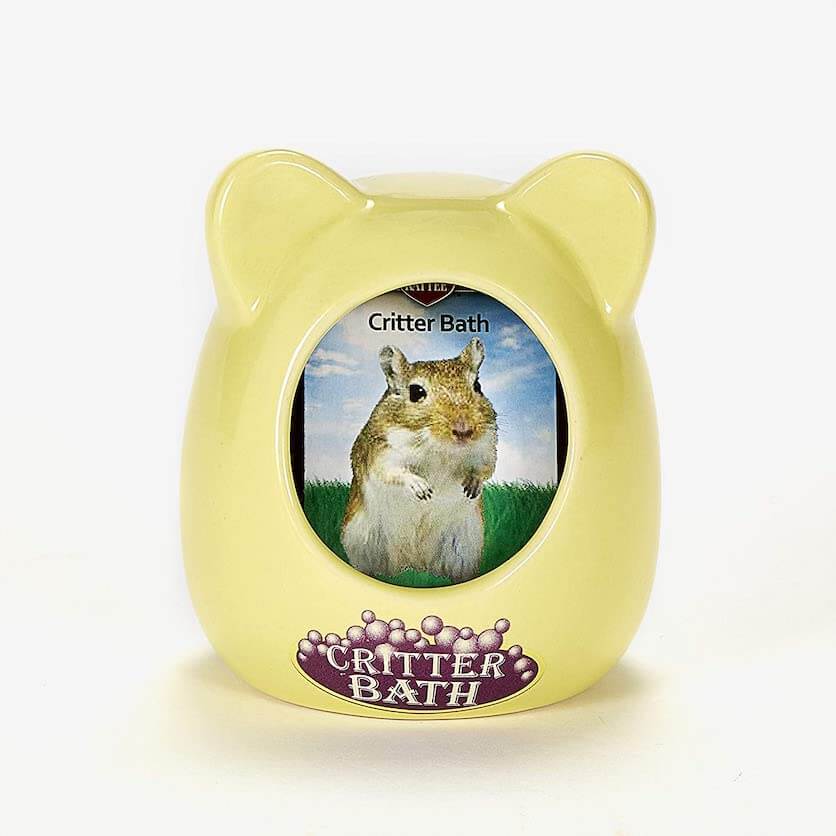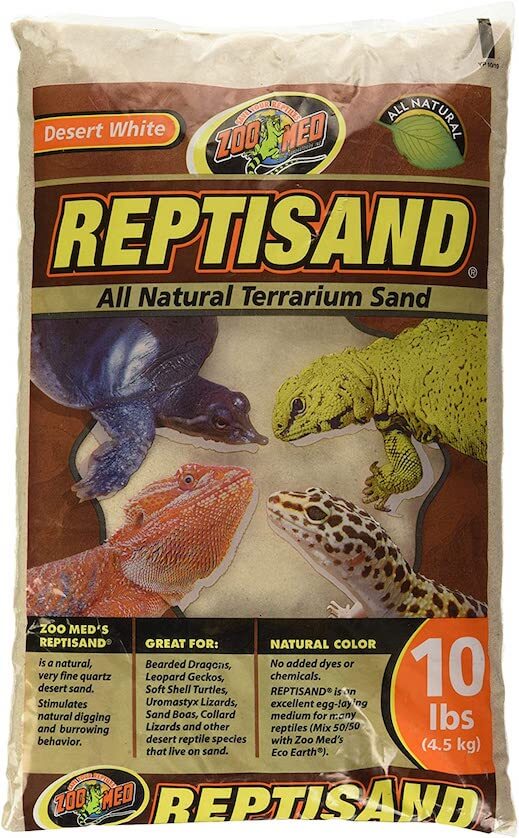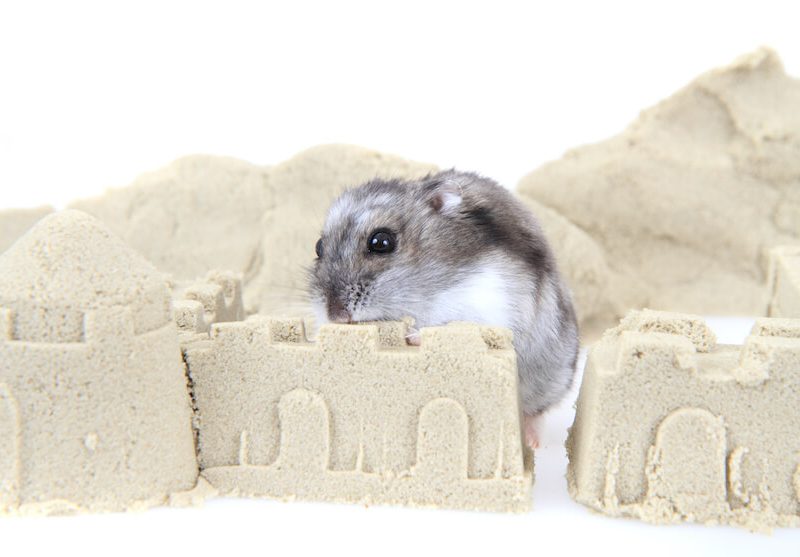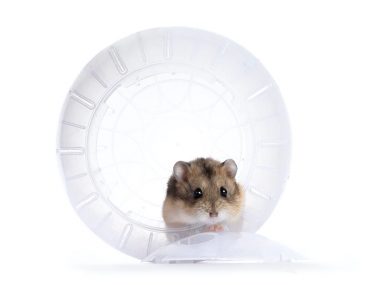Sand, for many of us, is the bane of all things, especially when we get it in our shoes, on the floors, and in our beds when vacationing at the beach. We can’t wait to wash it off. So why on earth would a hamster want to do the opposite and waller around in a sand bath? Let us explain…
Disclaimer: as an Amazon Associate we earn from qualifying purchases. Learn more.
Table of Contents
Sand Bath For Hamster: Everything That You Need to Know
You may be surprised to find out that a hamster gets clean by rolling around in the sand. It just doesn’t make sense in our minds and goes against everything we know about cleanliness. So, what’s behind this odd behavior in rodents?
A hamster’s natural habitat is arid, desert-like, where soils are either combined with sand or give way entirely to sand. A hamster’s coat contains protective oils vital to keeping them warm and protected from the elements.
When that oil builds up, they roll around in the sand, which absorbs the oil. The grains within the sand act as an exfoliant to scrub away dead skin cells that build up. Typically, the sand falls out of the hamster’s coat, leaving it refreshed and looking dashing again.
Many other animals also use the dust bathing method to clean themselves, such as chickens, birds, elephants, dogs, cats, horses, pigs, and more.
What Is A Sand Bath?
A hamster sand bath box is an enclosed/semi-enclosed structure/receptacle with an opening. This box (receptacle) is partially filled with a special sand and placed in the hamster’s cage. A hamster gets up into the sandbox and proceeds to roll around in the sand which is what’s known as a “sand bath.”
The native range of wild hamsters is typically in desert-like areas where sand is plentiful. These hamsters use sand to roll around in to refresh their coat and relieve skin issues. You won’t find a hamster taking a dip in a puddle of water because they don’t like water.
Water breaks down the natural oils on a hamster’s coat. These oils are protective to keep a hamster warm and promote a healthy coat. This is why you’ll hear warnings to never bathe a hamster in water.
As hamster parents, we want to provide our hammies with an environment that mimics their natural habitat. A sand bath is one of those things that a hamster would greatly appreciate having.
Do Hamsters Need A Sand Bath?
Many hamster parents don’t include a sand bath in a hamster cage due to the lack of having space within the cage. Sand bathing is part of a wild hamster’s grooming regime. There’s some debate over whether or not a pet hamster should have a sand bath or not.
All hamsters will at some time become smelly because of either tracking through excrement, food, or due to secretions from their scent glands. Our first inclination is to bathe our hamster in a nice warm, soothing bath. But hold on, water baths are a big no-no for hamsters.
The next best thing is to use a baby wipe to spot clean a very small area on your hamster if it’s necessary. Hamsters are fastidious groomers and typically clean themselves when needed. This is where a sand bath may come in handy.
The Vetsuisse Faculty Bern, Institute of Animal Genetics, Nutrition and Housing, Division of Animal Housing and Welfare published a research article that studied hamsters and their cage behaviors. Their findings revealed that grooming ranked as one of the top activities hamsters practiced.
Out of 60 hamsters, 46 of them used a sand bath. Hamsters in large cages spent 12% of their time in a sand bath, while hamsters in small cages spent 19% in their sand bath. So, as you can see, the majority of hamsters in the study did, in fact, use a sand bath.
How Often Should You Change A Hamster Sand Bath?
Your hamster’s sand may appear to be perfectly fine after numerous uses, and some hamster parents assume it doesn’t need to be changed. However, the sand should be changed out once a week when you do a thorough cage cleaning. After all, we wouldn’t want to reuse dirty bathwater over and over.
How to Choose A Sand Bath For Your Hamster

The receptacle you choose for your hamster’s sand bath should be size-appropriate. A Syrian hamster sand bath box should be larger to accommodate it. Syrians are the largest hamster species. There’s nothing worse than trying to stuff a large body into a sand bath box.
Likewise, if you have a dwarf hamster, their bath box will be smaller compared to the size of a Syrian’s. Dwarf hamster sand bath boxes should be small but not so small they cannot move around in them.
Things To Consider When Choosing A Sand Bath Box
One of the leading concerns of hamster parents is that a hamster bath box may not fit inside their hamster’s cage. If you already have a hamster and an established cage and you find yourself in this conundrum, no worries because you can set up the sand bath box in a playpen area where they can bathe.
If you are in the new hamster buying stages, prospective cages will need to have ample room for a sand bath box, toys, a wheel, food bowl, bedding, and a nesting box.
Things To Consider When Choosing Hamster Sand
Some of the best-rated hamster sands on the market have toxic, dangerous ingredients. It’s best to avoid any sand that may have harmful ingredients. We highly recommend using sand designed for hamsters.
Avoid:
- Silica/pumice/volcanic ash sand (carcinogenic in hamsters)
- Sand gathered on a beach, from a garden, etc. (it’s not sterilized and may contain chemicals or bacteria.)
- Scented sand (very irritating and harmful for a hamster)
- Clay-based sand (powdery, dusty, and easily inhaled)
- Calcium sand (it is designed for reptiles)
- Powdery sand (it is easily inhaled by a hamster, causing irritation)
- Cat litter (usually contains silica for absorption and fragrance)
Noteworthy Hamster Sand Bath Sands/Boxes
We have selected hamster sand bath boxes and sand types to consider, based on reviews, price, and convenience. So, let’s check them out!
Sand Bath Boxes
#1 Niteangel Small Animal Sand-Bath Box

This sand bath box features a clear acrylic sand bath box with a partially covered lid. The sand bath box is deep compared to other boxes. It comes in various shapes and colors. The overall rating is outstanding.
Best For: Syrian hamsters
Cost $$
Pros and Cons
| Pros | Cons |
|
|
#2 DIY – Fish Bowl Sand Box
A small fish bowl makes a perfect hamster sand bath box. You have the option of turning it up on its side or laying flat (depending on the width) to make a catch-all sand bath box.

Best For: Both Syrian or Dwarf hamster
Cost $
Pros and Cons
| Pros | Cons |
|
|
#3 Kaytee Small Critter Sandbox

At first glance, this little sandbox looks similar to a dish scrubby caddie. This sandbox is designed for dwarf hamsters and features a whimsical appeal.
Best For: Dwarf hamster
Cost $
Pros and Cons
| Pros | Cons |
|
|
Sand Bath Sands
You may read on various online forums that using regular outdoor sand gathered from a garden or beach is fine to use, provided you bake it in the oven. This is dangerous because you may obtain sand that has chemicals or harmful bacteria hiding in it.
Hamster sand is professionally sterilized to kill bacteria and it contains ingredients that are ideal for small animal use.
#1 Supreme Tiny Friends Farm Bathing Sand

This is the top-rated bathing sand recommended in the hamster community. It is 100% all-natural.
Cost $$
Pros and Cons
| Pros | Cons |
|
|
#2 Zoo Med ReptiSand

We would not usually recommend sand marketed as reptile sand. However, this particular sand is 100% natural desert sand which mimics the sand in a hamster’s natural habitat.
Cost $$
Pros and Cons
| Pros | Cons |
|
|
Can You Leave A Sand Bath In A Hamster Cage?
Leaving your hamster’s sand bath box in the cage poses an issue of your hamster urinating in it. The sand bath box becomes more of a place to do their business, and a soiled sandbox is the last thing you want your hamster rolling around in.
How Often Should Hamsters Bathe In A Sand Bath?
Ideally, you can place a sand bath box into your hamster’s cage daily for a certain period of time. A hamster may or may not decide to take advantage of having it in there to roll around.
By limiting the amount of time the sand bath box sits in the cage, you reduce the chance that your hamster decides to do its business in it. There will also be less waste and less cleaning. Eventually, your hamster will come to use it when offered.
A “Sandy-Clean” Hamster
There you have it in a nutshell; everything you need to know about a hamster sand bath and whether or not your hamster should have one. The right sand in the right sandbox offered at the right time is the key to a clean hammie!






